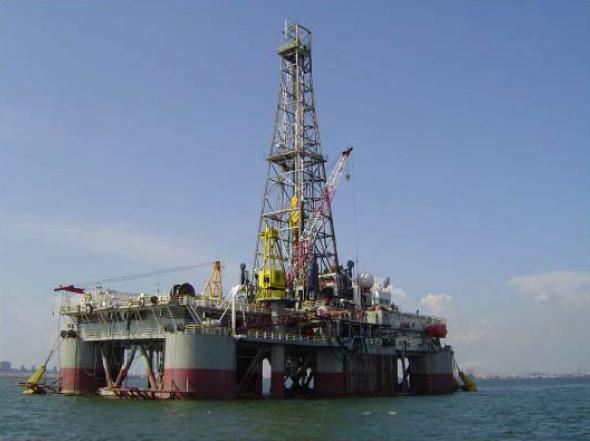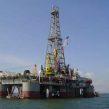
India in the South China Sea: Commercial Motives, Strategic Implications
Publication: China Brief Volume: 13 Issue: 20
By:

Although India is not a party to the South China Sea dispute, in recent years—particularly since Secretary of State Hilary Clinton vigorously advocated freedom of navigation in the South China Sea at the Asian Regional Forum meeting in Hanoi in July 2010, and India endorsed the stance—Beijing has grown wary of India’s intentions in the South China Sea. This wariness was further exacerbated in September 2011, when India and Vietnam announced plans to sign an agreement for oil exploration in the South China Sea. Beijing responded by saying that China enjoys indisputable sovereignty over the South China Sea, and that China’s stand was based on historical facts and international law. It was further stated that China was opposed to any project in the South China Sea, without directly referring to India (The Pioneer, September 16, 2011).
The same day, while answering a question raised by a correspondent about Chinese objection to India’s Oil and Natural Gas Commission Videsh Limited’s (OVL) proposed deal, New Delhi said that OVL had been present in Vietnam for quite some time, including in a major oil venture for offshore oil and natural gas exploration, and that they were in the process of further expanding their cooperation and operation in Vietnam (Media Briefing by Official Spokesperson on EAM’s visit to Hanoi). The OVL is a state owned company under the Ministry of Oil and Natural Gas and as such enjoys diplomatic support of the government. The government, however, does not interfere in its day to day operations.
India already has a stake in Block 06.1, located 370 kilometers south-east of Vung Tau on the southern Vietnamese coast with an area of 955 square km. The exploration license for this block was acquired by OVL in 1988. The field started commercial production in January 2003. During 2010-11, OVL’s share of production from the project was 2.249 billion cubic meters (bcm) of gas and 0.038 million metric tons (mmt) of condensate (Annual Report of ONGC Videsh Limited 2010-11). Later in 2006, OVL acquired two more blocks in the South China Sea for hydrocarbon exploration. Block 127 is an offshore deep-water Block, located at water depth of more than 400 meters with an area of 9,246 sq. km. OVL had invested approximately $68 million by March 2010. A location for drilling an exploration well was identified and the well was drilled in July 2009 to a depth of 1,265 meters. As there was no hydrocarbon presence, OVL decided to relinquish the block to Petro-Vietnam. The second Block 128 was also acquired at the same time. The Company had invested approximately $49.14 million by March 31, 2012. As in the case of Block 127, in Block 128 also the well could not be drilled with the rig, as it had difficulty anchoring on the location. The drilling activity has been kept under suspension. Vietnam has been goading India to pursue drilling in Block 128, asserting that it is very much within its territorial water.
The issue was, however, played out in the media, both in China and India. The Global Times quoted Wu Xinbo, Professor at the Center for American Studies at Fudan University: “As a South Asian country, India actively takes part in East Asian issues through the support of the U.S., which has been advocating for Asian countries to counter China. The U.S. takes every opportunity to counter China, and its joint military maneuvers with Japan and other regional countries has been more frequent in recent years” (Global Times, September 17, 2011). Wu added that this project helps India kill two birds with one stone—it will bring economic benefits to India while also balancing out China politically. The article quoted another Fudan scholar, Shen Dingli, Director of the Centre for American Studies, who said, “In recent years, China has also been building up relations with countries like Myanmar that neighbor India, not to mention that Pakistan invited China to provide safety protection, and offered China a naval port on the Indian Ocean. All these moves made India feel nervous.”
India, in spite of resistance from China, concluded the agreement with Vietnam during the visit of Vietnamese President Truong Tan Sang to India on October 12, 2011. OVL and its Vietnamese counterpart, Petro-Vietnam, inked a three-year agreement for long-term cooperation in the oil and gas sector. The agreement is intended for developing long-term cooperation in effect for three years. Some key areas in which the companies plan to cooperate are related to the exchange of information on the petroleum industry; exchange of working visits of authorities and specialists in various fields of the petroleum industry; new investments; expansion and operations of oil and gas exploration; and production, including refining, transportation and supply in Vietnam, India, and third countries according to the laws and regulations of their countries. President Truong said that all disputes with China, including claims in the South China Sea, would be solved peacefully through negotiations and a code of conduct for good relations in the region.
India’s defiance of China further riled Beijing. New Delhi and Beijing, however, did not allow the relationship between the two countries to drift further. Prime Minister Manmohan Singh, in his meeting with his Chinese counterpart Wen Jiabao on the side-lines of the East Asia Summit meeting in Bali in November 2011 in response to Premier Wen Jiabao’s concerns, reiterated that Indian exploration of oil and gas deposits in the South China Sea were purely commercial, and the issue of sovereignty over the South China Sea should be resolved according to international law and practice (The Hindu, November 18, 2011). India’s nuanced position was further clarified by its Defense Minister A.K. Antony in September, 2011 while addressing the Naval Commanders Conference in New Delhi, where he said, “There is no question of India going there in large scale. We will go there for exercise and uninterrupted passage of ships and trade. There is no question of any naval presence there. That is not our intention, our main concern is to protect our core area of interest,” he said (The Indian Express, October 13, 2011).
Although India treats the issue of OVL’s foray into the South China Sea primarily as a commercial venture, its strategic position with regard to its engagement in the Asia-Pacific can be discerned from a statement by its National Security Advisor, Shivshankar Menon, some time back in the United States when he said at the Carnegie Endowment for International Peace, “China has a presence in South Asia. It has been there for a long time… We have had a presence in East Asia for a long time. And that’s a fact.” Emphasizing peaceful cooperation, he said: “We have global interests, Chinese have global interests, all of us do… All the major powers, as I said, are not only inter-dependent on each other, but also are dealing with each other across a whole range of issues—none of which recognizes some artificial constructs like South Asia or East Asia. These are interlocking circles about security or prosperity, whichever way you look at it” (Zee News, October 1, 2010). This succinctly reflects India’s strategic thinking with regard to the Asia-Pacific. India’s strategic interest in the South China Sea can also be attributed to the fact that 40 percent of its trade with the United States transits through the West coast, besides augmenting its energy resources.
India’s foray into the South China Sea can be attributed to many reasons. While it is primarily, as maintained by the Government, for commercial purposes, it also resonates with the government’s “look east” policy of comprehensive engagement with the countries of the region, particularly with Vietnam. The spat between India and China over the South China Sea was also exacerbated also due to India’s support for freedom of navigation in the South China Sea in multilateral forums, which China perceives as containment of China.
India has not been dragged into turbulence over the South China Sea recently, as China has focused its efforts on contesting its disputes with Japan and the Philippines. India in the meantime has also fleshed out further clarity with regard to its stated position on the sea. Indian External Affairs Minister Salman Khurshid recently said, “We are not involved in a dispute in the South China Sea. We believe that it should be settled bilaterally between countries which have different points of view. It should be done peacefully and within four corners of the code of conduct that ASEAN is developing for the South China Sea” (The Hindu, August 15). While this position is an endorsement of Beijing’s stance on the issue, New Delhi consistently stands for freedom of navigation and sea lanes of communication. Answering a Parliamentary Question from Lok Sabha, the popular chamber of India’s Parliament, then-External Affairs Minister S.M. Krishna wrote on August 17 that “India has on several occasions reiterated its position that it supports freedom of navigation, right of passage and access to resources in accordance with accepted principles of international law. These principles should be respected by all. Sovereignty disputes in the South China Sea must be resolved peacefully by the countries concerned in accordance with international law and practice.”
India boldly articulated its position with regard to freedom of navigation at the Commemorative Summit of the ASEAN-India summit held in New Delhi in December 2012 to mark its 20th anniversary. Addressing the Summit Prime Minister Manmohan Singh reiterated the idea of regional security architecture. He urged the member countries to intensify their engagement for maritime security and safety, for freedom of navigation and for peaceful settlement of maritime disputes in accordance with international law, political and security consultations, including in regional forums such as the East Asia Summit, the ASEAN Regional Forum and the ASEAN Defense Minister’s Meeting Plus and proposed that the leaders should work together more purposefully for the evolution of an open, balanced, inclusive and transparent regional architecture (Opening Statement by Prime Minister at Plenary Session of India-ASEAN Commemorative Summit, Strategic Digest, January, 2013) .
It is still unclear as to whether OVL will still pursue oil exploration in Block 128. The annual report of OVL for the year 2009-10 mentioned that the drilling activities in Block 128 would be resumed in 2011. However the report for 2011-12 simply mentions that PetroVietnam has suggested OVL to continue the exploration program in the block for additional two years with effect from 16th June, 2012 by revisiting the geological model with the integration of data likely to be available with the assistance from Petro Vietnam.





